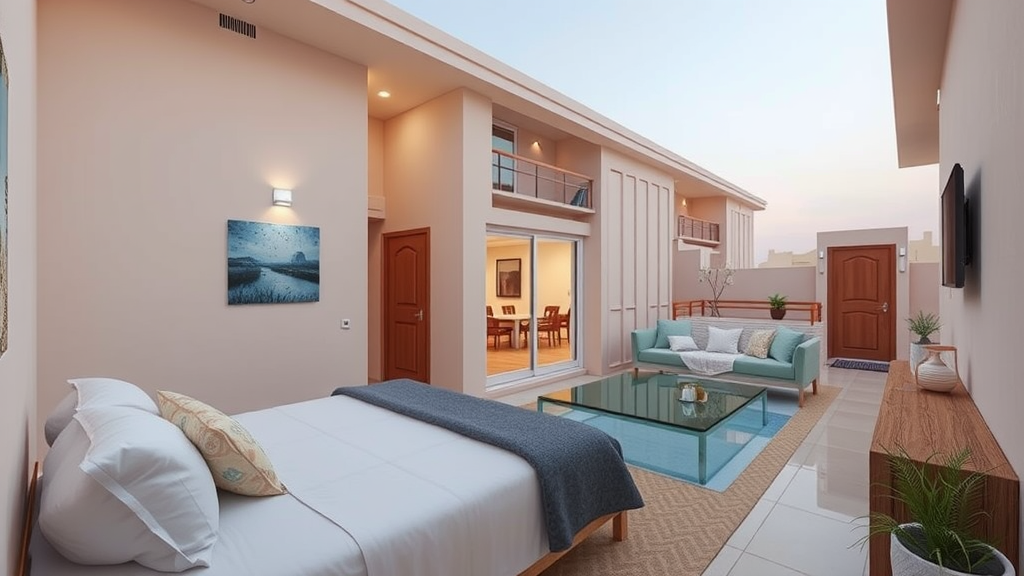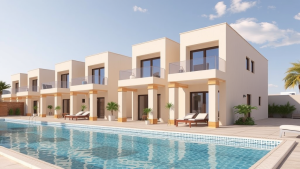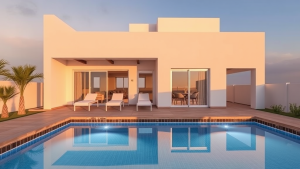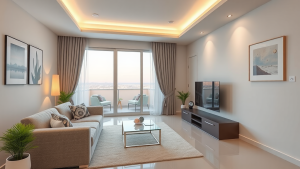Key accessible home features every retiree should consider
As you enter retirement, making sure your home is comfortable and accessible becomes a top priority. Knowing what accessible home features to consider can significantly improve your daily life, making activities easier and more enjoyable. Here’s a comprehensive guide to help you understand the key features that should be on your radar.
One of the first things to think about is the layout of your home. An open floor plan can be extremely beneficial. By eliminating unnecessary walls and barriers, you create a space where movement is more straightforward. This design reduces the risk of falls and gives you more room to navigate comfortably, especially if you use a mobility device.
Doorways and hallways should also be considered. Wider doorways, typically at least 36 inches, allow for easier access for walkers and wheelchairs. Hallways should be similarly spacious to accommodate mobility aids, ensuring you can move throughout your home with minimal hindrance. Modifications like removing thresholds that cause tripping hazards can enhance your mobility dramatically.
Next, let’s talk about flooring. Choosing the right type of flooring is crucial. Hard surfaces like tile, laminate, or hardwood are easier to navigate with mobility aids, as opposed to thick carpets, which can be obstacles. If you love carpets, opt for low-pile options that will minimize tripping risks. Avoiding slippery surfaces also helps prevent falls.
Bathrooms are a vital area where accessibility features can significantly impact your safety. Consider installing grab bars near the toilet and in the shower or tub. These provide support when standing up or sitting down, greatly reducing the likelihood of falls. A walk-in shower with a bench seat can also make bathing much simpler and safer. If you prefer a bathtub, look for models that have a door for easier access.
Adjustable showerheads and handheld shower wands can enhance your bathing experience. They allow you to control the water spray angle and height, so standing is not a must. Non-slip mats or adhesive strips in the shower or tub add another layer of protection against slips.
In the kitchen, consider features that put everything within reach. Lower countertops and pull-out shelves can prevent awkward bending and stretching. Storing frequently used items at waist level helps maintain balance and makes cooking more enjoyable. You might also want to look at touchless faucets, which allow for easy use without turning knobs.
Lighting plays a significant role in making your home accessible. Adequate lighting can help you navigate safely, especially if you have vision impairments. Opt for bright, energy-efficient LED lights, and consider motion sensors in darker areas. Installing light switches at accessible heights ensures you don’t struggle to reach them.
Outdoor spaces shouldn’t be overlooked either. If you enjoy gardening or just having a cup of tea outside, ensure your patio or yard accommodates your needs. Raised garden beds can make gardening less strenuous on your back and knees. Walkways should be clear and well-maintained to prevent falls and should be wide enough for mobility devices.
Smart home technology can enhance accessibility. Devices that enable voice control for lights, thermostats, and other electronics can make living easier as you age. Adding smart locks, doorbells, and security cameras can also provide peace of mind, allowing you to monitor your home without having to physically check every corner.
- Open floor plans for easy movement.
- Wider doorways and hallways.
- Low-pile carpet or hard flooring.
- Grab bars in bathrooms.
- Walk-in showers or bathtubs with doors.
- Adjustable and handheld showerheads.
- Lower kitchen counters and pull-out shelves.
- Bright, motion-sensor lighting.
- Accessible outdoor spaces.
- Smart home devices for convenience.
These features can help create a home that is both stylish and accommodating as you transition into retirement. By implementing these accessible home features, you can ensure that your living environment supports your needs and enhances your overall quality of life.
The benefits of aging in place: how accessible features enhance quality of life
Aging in place has become a common goal for many retirees. This concept allows older adults to remain in their own homes, rather than moving to assisted living facilities or nursing homes. To achieve this, having accessible home features is crucial. These features can vastly enhance your quality of life, providing both comfort and safety as you age.
One of the primary benefits of accessible home features is safety. Homes equipped with grab bars in the bathroom, non-slip flooring, and wider doorways can significantly reduce the risk of falls. Falls are a leading cause of injury among older adults, and eliminating hazards in your home is essential. Simple modifications can make daily activities much safer, ensuring you can move freely without fear of accidents.
In addition to safety, accessible features promote independence. As you age, you may find it harder to perform certain tasks. With features like stairlifts, walk-in tubs, or roll-in showers, you’ll be able to complete daily routines without assistance. This independence not only boosts your confidence but also improves your mental health, making you feel capable and empowered.
Your home should also be comfortable. Accessible home features can contribute to a more enjoyable living environment. For example, adjustable countertops and cabinets at varying heights allow you to cook and clean with ease, even if you are using a wheelchair. Thoughtful layout and design can transform your living space into a truly accommodating environment.
Another benefit is the financial aspect. Aging in place can be more cost-effective than moving into a facility. While you may invest in some home modifications, the overall expenses tend to be lower compared to the ongoing costs of assisted living. Many communities also offer support programs that can help offset some of these renovation costs, making it easier for you to create a home suited for aging.
Accessible features can also help you stay connected to your community. Aging in place allows you to remain in a familiar environment, close to friends, family, and social supports. This connection is vital in maintaining a healthy and happy lifestyle. You won’t have to worry about leaving behind the people and places that matter to you, which can lead to feelings of isolation.
It’s essential to consider the long-term when planning your accessible features. Here are some important features to consider for your home:
- Entryways: Install ramps or ensure that there are zero-step entries to facilitate easy access.
- Bathroom modifications: Use grab bars, raised toilets, and walk-in or roll-in showers to enhance safety and usability.
- Kitchen adaptations: Add pull-out shelves and adjustable countertops to simplify meal preparation.
- Flooring: Opt for non-slip surfaces to prevent accidental slips and falls.
- Lighting: Increase illumination with brighter light fixtures and night lights to enhance visibility in all areas.
Additionally, technology can play an integral role in accessible living. Smart home devices allow you to control heating, lighting, and even security systems with ease. Voice-activated devices can improve convenience and accessibility, enabling you to manage your home without physical strain. For instance, virtual assistants can help you set reminders for medication or connect with friends and family through video calls.
Transitioning your home to be more accessible can also have a positive impact on caregivers. If you have family members helping you with daily activities, accessibility features can ease their burden, allowing them to assist without excessive strain. This support can lead to better relationships and a more harmonious living situation.
As you consider the benefits of aging in place, remember that accessible home features significantly elevate your overall quality of life. By investing in safety, comfort, and independence, you create an environment where you can thrive as you age. It’s about more than just making modifications; it’s about creating a space that allows you to continue living life on your own terms.
As you plan for retirement, incorporating accessible home features can profoundly impact your comfort, safety, and overall quality of life. Prioritizing elements such as step-free entrances, wider doorways, and grab bars in key areas like bathrooms can make daily activities smoother and reduce the risk of accidents.
The benefits of aging in place are numerous; they not only foster independence but also allow you to remain connected to your community and maintain your routines. Accessible features promote a sense of familiarity and stability, which is essential for emotional well-being. Additionally, with advancements in smart home technology, you can enjoy increased convenience and monitoring for safety, making it easier to manage your environment.
By thoughtfully considering these key accessible home features, you open the door to a more fulfilling retirement. Transitioning to a home equipped to meet your needs can empower you, ensuring you enjoy a vibrant lifestyle filled with comfort and security. In essence, investing in accessibility is investing in your future happiness and peace of mind. Whether building a new home or modifying your current space, making informed choices can help you embrace this next chapter with confidence and ease.
15% off – spacious 4 bedroom standalone villas in soma bay Hurghada under 200k — ideal investments for dutch families
21% cheaper – stunning 1 bedroom apartments with swimming pools in sahel hasheesh Hurghada under 50k — homes for danish winter escapers












